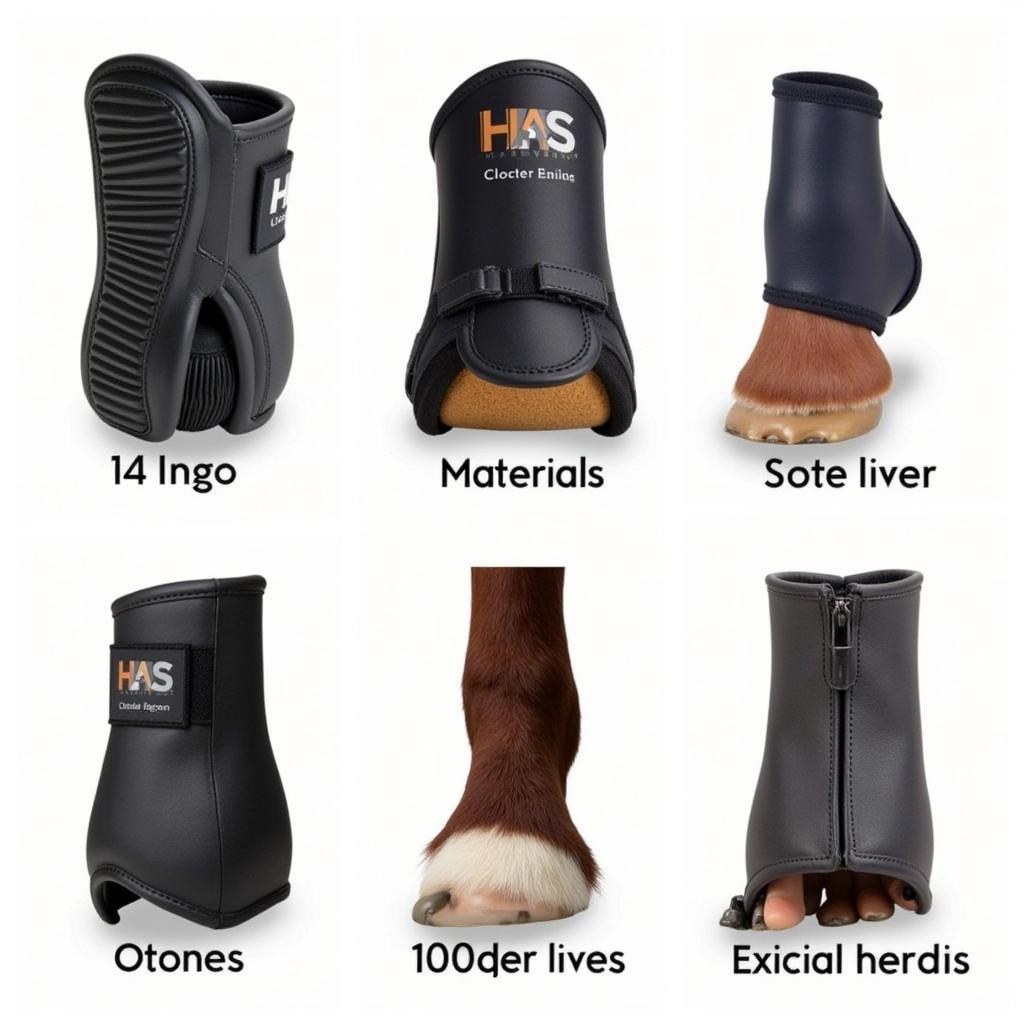Horse Hoof Boots have revolutionized equine care, offering a versatile solution for protecting, supporting, and promoting healing in horses’ hooves. Whether you’re a seasoned equestrian or a new horse owner, understanding the benefits and uses of hoof boots can significantly impact your horse’s well-being.
 Types of Horse Hoof Boots
Types of Horse Hoof Boots
Why Use Horse Hoof Boots?
Traditional metal horseshoes, while effective for some purposes, have limitations. They restrict the natural movement of the hoof, can cause pressure points, and require removal and replacement by a farrier. Hoof boots, on the other hand, offer a more flexible and adaptable approach to hoof care. Here’s why more horse owners are turning to hoof boots:
- Protection: Hoof boots act as a barrier, shielding the hooves from rough terrain, sharp objects, and abrasive surfaces. This is particularly important for horses with sensitive soles, thin hoof walls, or recovering from injuries.
- Support: For horses with compromised hoof structures, such as laminitis or navicular disease, hoof boots provide crucial support and stability, reducing strain and promoting healing.
- Rehabilitation: In cases of abscesses, punctures, or other hoof injuries, hoof boots create a clean and protected environment that facilitates healing and prevents further damage.
- Performance Enhancement: Some hoof boots are designed to improve traction and grip on various surfaces, benefiting horses in disciplines like trail riding, endurance riding, and even jumping.
 Horse Wearing Hoof Boots for Trail Riding
Horse Wearing Hoof Boots for Trail Riding
Types of Horse Hoof Boots
Just like regular shoes, horse hoof boots come in various styles and materials, each catering to specific needs.
- Boot Material: Common materials include durable rubber, flexible TPU (thermoplastic polyurethane), breathable mesh, and tough Cordura fabric. Your choice depends on the level of protection, support, and breathability required.
- Boot Design: Boots can be open-front, closed-front, or have adjustable features like gaiters or pads to accommodate different hoof shapes and conditions.
- Closure Systems: From hook-and-loop fasteners to buckles and cables, various closure systems offer secure and adjustable fits.
Choosing the right type of hoof boot depends on several factors:
- Your horse’s hoof conformation and condition: A veterinarian or experienced farrier can help you assess your horse’s hoof needs and recommend suitable boot options.
- Intended use: Are the boots for everyday wear, trail riding, therapeutic purposes, or performance enhancement?
- Fit and Comfort: A properly fitted boot is crucial to prevent rubbing, chafing, or discomfort.
 Measuring Horse Hoof for Boots
Measuring Horse Hoof for Boots
Tips for Using Horse Hoof Boots
- Gradual Introduction: Start by introducing hoof boots for short periods and gradually increase the wearing time as your horse adjusts.
- Regular Inspection: Check your horse’s hooves and the inside of the boots after each use for any signs of rubbing, debris, or excessive moisture.
- Proper Cleaning and Storage: Keep the boots clean and dry to prevent bacterial or fungal growth. Store them in a cool, dry place.
- Consult Professionals: Don’t hesitate to seek advice from your veterinarian or farrier regarding hoof boot selection, fitting, and any concerns about your horse’s hoof health.
Conclusion
Horse hoof boots offer a versatile and valuable tool for promoting hoof health, providing protection, and supporting your horse’s well-being. By understanding the different types, benefits, and best practices for using hoof boots, you can make informed decisions to ensure your equine companion enjoys optimal hoof care.
Remember, investing in your horse’s hoof health is an investment in their overall comfort, performance, and longevity. For personalized advice on choosing the right hoof boots for your horse, consult with our experienced team at Justus Horses USA. We offer a wide range of equine fusion horse boots and other essential equine care products to meet your horse’s needs. Contact us today!